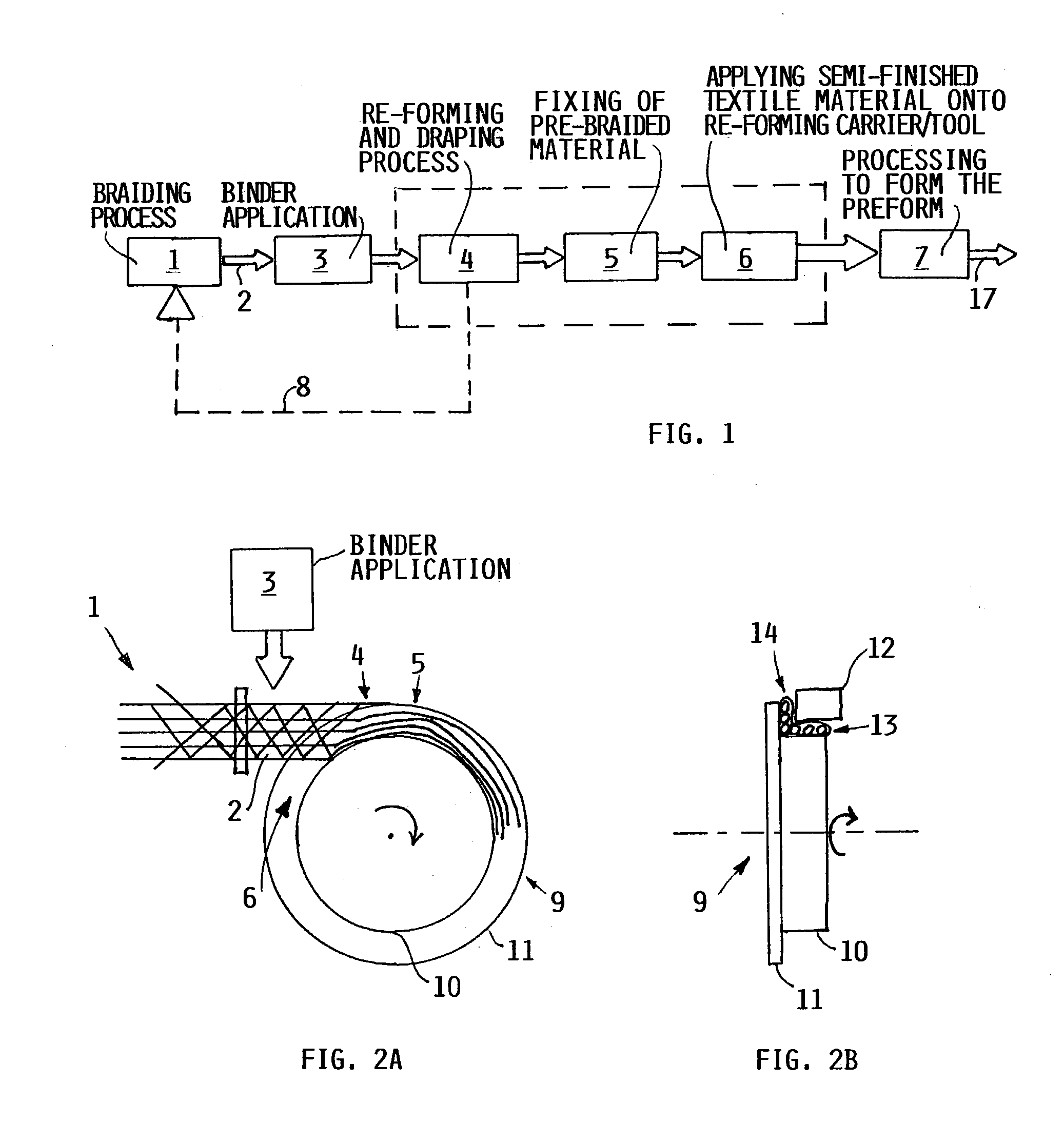Method of producing textile preforms for fiber reinforced composite products from textile semi-finished articles
- Summary
- Abstract
- Description
- Claims
- Application Information
AI Technical Summary
Problems solved by technology
Method used
Image
Examples
Embodiment Construction
[0023] FIG. 1 is a schematic block diagram for explaining the general concept of the inventive method of producing a textile preform from a textile semi-finished material or article, in connection with a particular example embodiment using a braiding process to form the semi-finished material or article. In this example, the method includes a braiding process 1 for producing a loose and drapable pre-braided material 2, the optional application 3 of a binder, for example in the form of a thermoplastic powder, onto the pre-braided material 2, a reforming or draping process 4 applied to the pre-braided material 2, a fixing step 5 of fixing the fibers of the pre-braided material 2 to form a textile semi-finished article, an application step 6 of applying the textile semi-finished article onto a carrier (e.g. 9, see FIGS. 2A and 2B), and a subsequent processing step 7 of further treating or processing the semi-finished article to form thereof a textile preform, which is provided for the ...
PUM
| Property | Measurement | Unit |
|---|---|---|
| Temperature | aaaaa | aaaaa |
| Pressure | aaaaa | aaaaa |
| Length | aaaaa | aaaaa |
Abstract
Description
Claims
Application Information
 Login to view more
Login to view more - R&D Engineer
- R&D Manager
- IP Professional
- Industry Leading Data Capabilities
- Powerful AI technology
- Patent DNA Extraction
Browse by: Latest US Patents, China's latest patents, Technical Efficacy Thesaurus, Application Domain, Technology Topic.
© 2024 PatSnap. All rights reserved.Legal|Privacy policy|Modern Slavery Act Transparency Statement|Sitemap

